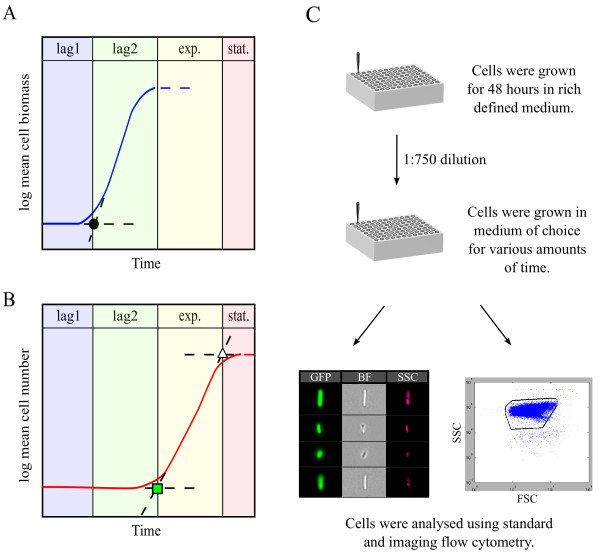Figure 1.
Definition of lag1 and lag2 phases, and the experimental system. (A) A schematic representation of mean cell biomass over time, with separation into phases. In lag1, biomass does not measurably increase. The end of lag1 is operationally defined using the biomass (or cell length) curve, at the intersection between the constant biomass line at the beginning of the curve, with the extrapolated exponential increase in biomass in lag2 (black circle). In lag2, biomass increases. The end of lag2 is defined by the first division events. At this point biomass plateaus (or peaks and then declines), as cells reach a biomass characteristic of exponential growth. See Additional file 1: Table S1, and Figure S1. (B) A schematic representation of mean cell number over time, with separation into phases. The end of lag2 is operationally defined by the intersection between the constant cell number line at the beginning of the curve, with the extrapolated exponential increase in cell number (green rectangle). The end of exponential phase is operationally defined by the intersection between the increasing cell number line, with the constant cell number line at the end of the curve (white triangle). See Additional file 1: Table S1, and Figure S1. (C) Schematic description of the experiment: cells were grown for 48 hours in rich defined medium, inoculated into poor or rich defined medium, grown for various amounts of time in a robotic system, and analyzed by standard flow cytometry and by imaging flow cytometry.

